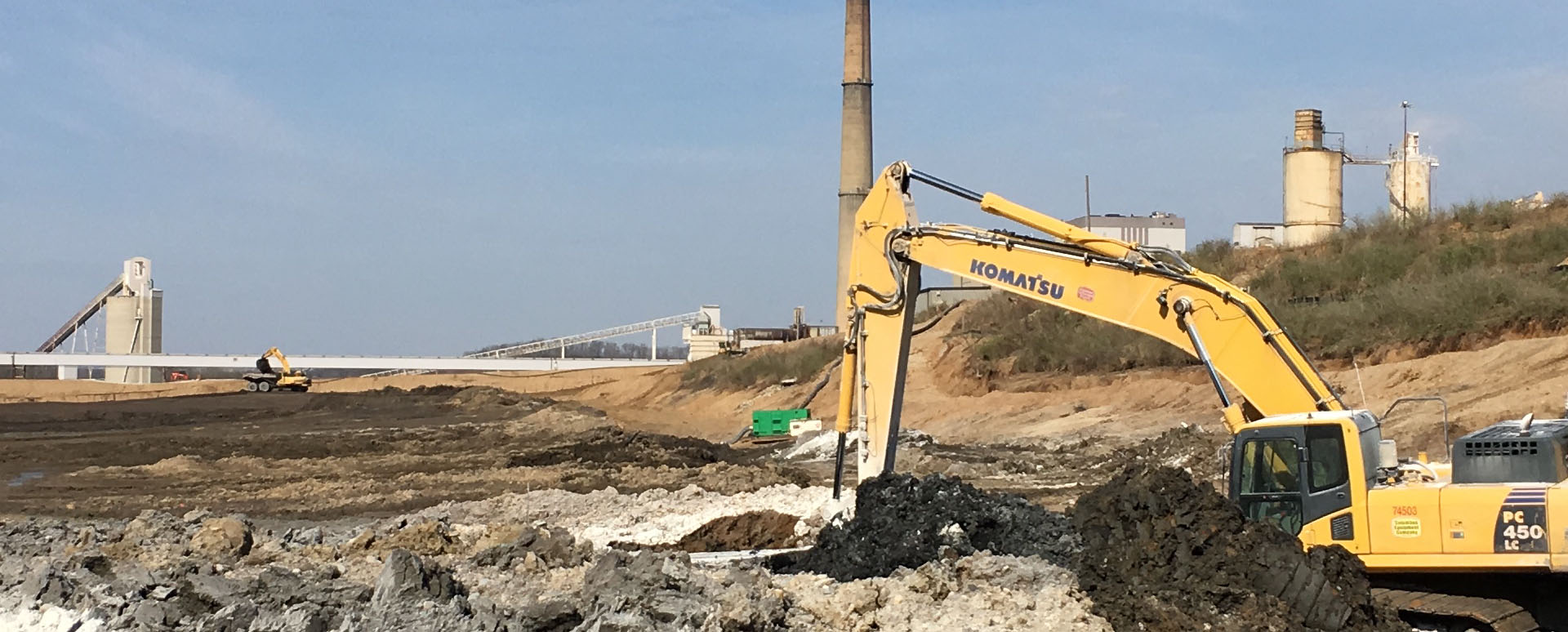Sludge Drying Overview

What are Some Common Difficulties Associated with Sludges?
The term “sludge” generally refers to the residuals that remain after industrial and commercial processes, such as the treatment of biosolids, drinking water, and wastewater. In addition to potential contaminants, sludges typically need to be dried for handling and disposal purposes. Depending on the physical and chemical characteristics of the sludge, water molecules are often trapped between solid particles resulting in a thick, viscous liquid with a semi-solid consistency. Materials of this consistency present handling and transportation concerns, of which both can adversely impact disposal cost. Mintek’s products are effective at removing excess water and will be the focus of this discussion.
What Sludge Drying Options are Available?
Fortunately, there are many technologies available to effectively dry sludges, most having their own niche in the market. Common techniques may involve the use of chemicals, polymers, gravity separation, evaporation, as well as thermal and mechanical processes. Thermal drying requires high amounts of energy to evaporate water from the material and physical contact needed for mechanical drying can only dewater some sludges to a certain point.
Let’s work together.
How Do Mintek Products Dry Sludge?
Mintek’s focus is chemical solutions. Our lime-based products include quicklime and Calciment® LKD, which effectively dry sludge and are often used as a final conditioning step to further improve handling characteristics.
When determining the best drying method, waste minimization should be considered. Many techniques can add significant weight or volume which increases the overall sludge disposal cost. Since both quicklime and Calciment® LKD “consume” water, they can provide an effective drying solution and can also be used to complement mechanical dewatering processes.
One of the most effective techniques to dry sludge is using the proper chemical reagent. Chemical drying is often simpler, faster and less costly than other drying options. Lime-based reagents from Mintek will chemically combine with the water in sludge to dry the waste into a manageable material. An additional benefit of sludge drying with quicklime and Calciment® LKD is that the chemical reaction creates enough heat to drive off additional moisture contained in the sludge. This, coupled with reducing the overall sludge volume and weight, often leads project owners and engineers to consider lime-based products to simplify the process. Additionally, Mintek’s products can be more cost-efficient and easier to implement in an operation; this is especially the case for temporary systems or field remedial applications when compared to the more complex mechanical systems.
We're here to help you find the best solution for your next project. Let's get started. Give me a call at 937-641-9901.

Josh Weser
Mintek Resources
Frequently Asked Questions
How are sludges generated?
- Biosolids and other material remaining after industrial and/or municipal wastewater treatment
- Residuals from chemical products stored in tanks or vessels
- Leftover material from refining processes
- Normal operations of many other manufacturing processes
How are sludges dried?
- Passive operation, can dry some sludge with the help of gravity and evaporation
- Mechanical separators, such as presses or centrifuges, physically force the water out of the material
- Thermal dryers, which use energy to produce heat and drive water out of the material through evaporation
- Chemical drying, as with Quicklime and Calciment® LKD from Mintek, chemically combine with water, effectively drying the sludge
How does sludge drying with lime-based products differ from other techniques?
- Some techniques rely on simple principles. If you have time, and a sludge that cooperates, gravity and evaporation can naturally dewater a sludge. Thermal and mechanical processes require expensive, specialized equipment, design & permitting.
- Drying with Mintek’s quicklime and Calciment® LKD requires little more than the reagents themselves and a means to mix the reagent into the sludge. Mixing can be accomplished by using a standard bucket or mixing head attached to an excavator for field projects or other standard equipment for introducing dry reagents. The reagents do the work to dry the sludge.
Are there any beneficial reuses for sludges?
- Depending on the source of the sludge, and the chemical constituents that are present, some can be beneficially reused to condition soil or as a feed stock for another manufacturing process. Reuse of waste materials requires careful review of all applicable federal, state, and local regulations. In other situations, a sludge may require additional physical/chemical treatment prior to final disposal at a landfill or an incinerator.
How do I know if Mintek chemical options may be right for my sludge?
- If your sludge is overly wet
- If your sludge is reluctant to give up bound water when using other techniques
- If you have volume or weight restrictions
Why choose Mintek products for your next sludge drying project?
- Proven product performance
- Cost effective option
- Technical support
- Multiple supply terminals & logistic options
- Quick implementation
Related Posts
Cold Weather Liming for Construction Sites: Everything That You Need to Know
Winter construction doesn't have to mean costly shutdowns. Cold weather liming for construction sites leverages the exothermic reaction of lime-based products to dry, modify, and stabilize soils even in freezing conditions. This comprehensive guide covers the science...
Tariffs Disrupt Construction: Lime Keeps Projects Moving
Tariffs are reshaping the construction landscape. From cement and steel to aluminum and other essential materials, shifting trade policies are creating ripple effects across the industry. Even when prices hold steady, the uncertainty around future costs and sourcing...
Soil Compaction: Methods, Meaning, and Effects
What is Soil Compaction? Soil compaction is the practice of applying mechanical compactive effort to densify a soil by reducing the void space between soil particles. Compaction occurs when particles are pressed together to reduce the space between them. Highly...